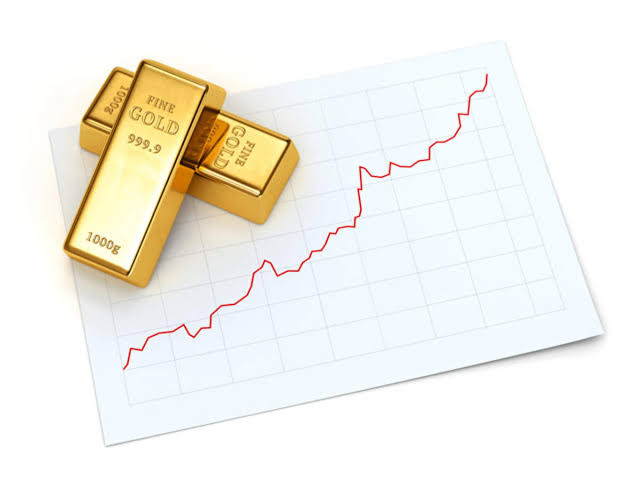Investing in Gold and options for the retail investor

Article by
V.P. Nandakumar is MD & CEO of Manappuram Finance Ltd.

Whenever the price of gold goes up, the personal finance columns published in various newspapers and periodicals see hectic discussions about how much money an investor should set apart for investing in gold. However, during periods when the price of gold is stable or showing weakness, these very columns tend to be either silent about gold or go the other way and recommend against holding gold in the portfolio. But now that gold price in India is ruling at historic highs, there is a broad consensus that gold should always be a part of our investment portfolio, with a decent share of our total budget (anywhere from 10 to 20 percent) earmarked for the yellow metal. It is therefore time to look at what makes gold an enduring investment and also examine the various avenues available to retail investors who wish to add gold to their portfolio.
Gold was historically used as a currency. When paper money came into the picture, it was initially backed by gold to inspire confidence. Gold holds the characteristics of a currency, a financial asset and also has quasi-foreign exchange attributes. After the US came off the gold standard in 1971, there is currently no other national currency in the world backed by gold. With the rise of paper currency, governments acquired great power to print currency at will. It is said that with great power comes great responsibility. However, the record shows that governments around the world have too often shirked the responsibility to exercise this power with due care. And whenever this power was misused, it set off inflationary spirals in the economy, which acted as a check on the power of governments to issue or print currency at will.
Gold is also a rare commodity which ensures its continuing appeal. Every year, fresh mining of gold adds only about 2,500 to 3,000 tonnes to the supply. According to the World Gold Council, the total amount of gold mined over the ages would be around 190,000 tonnes of which India is estimated to hold as much as 35,000 tonnes, and that is nearly 20% of al the global gold ever mined! This should be viewed against India’s share in land area at 2.4%, in population at 17%, and in GDP at 3.9%. Moreover, India’s share in global gold demand is about 22% a year (average annual net gold import of 800 tonnes) against a share of 2% in world trade.

Gold during an Economic Crisis
During the great financial crisis of 2008-09, restraint in the matter of currency printing was given up by central banks in the advanced countries in the interest of stabilizing their economies. With all the extra money injected into the economy, interest rates fell while asset prices have increased sharply. Gold, in particular, was a major beneficiary, it’s price touching a peak of USD 1,900 per troy ounce in Aug 2011. In the current economic crisis induced by the outbreak of COVID-19 pandemic, the price of gold has once again risen sharply and now looks set to pierce the USD 1800 level. In India, with the Rupee having depreciated from levels of 45 to the dollar in Aug 2011 to about 75 rupees to the dollar nowadays, domestic gold prices are at historic highs, nearly Rs. 5,000 per gram (24K gold).
In the current economic crisis also, US Federal Reserve is pumping in a lot of money, and this will certainly shore up the value of gold, which is priced in USD. Besides, Gold invariably performs well during times of economic stress as it is a natural safe-haven asset. Add to this, the sheer amount of liquidity being injected into the system has resulted in interest rates falling in western economies (and Japan) to near zero and even negative levels. This further increases demand for gold as the opportunity cost of holding gold (foregoing the interest which could have been earned by parking the money as a bank deposit) becomes insignificant.
Moreover, the demand for gold has been resilient across economic cycles. When the economy is doing well, people spend more on discretionary purchases such as jewellery and technological devices, which increases the demand for gold. When the economy is down, confidence in the country’s financial system and currency weakens and investors seek reliable, liquid assets to protect their capital. This increases the demand for gold and thus its price.
Gold and the Indian consumer
In order to reduce portfolio risk, it is important to diversify one’s investments. Gold has a negative correlation with equities and this helps in diversifying the portfolio in a convenient way. Whenever the equity side of the portfolio goes through a bearish phase, the notional loss on the same can be offset to an extent by the gold side.
Almost every Indian household owns gold in some quantity or other. With our banking system lacking reach, particularly in rural areas, households use gold jewellery as a saving mechanism. Farmers purchase jewellery post-harvest and used them to raise funds for seeds and fertiliser in the next season. The economics was simple; buy gold when you have a surplus, and sell or pledge the gold when you need cash. Physical gold is still the most common form of investment in gold. The advantage is, you can keep it with you, you can touch it, and you can always take it out to admire its lustre and beauty. It is as real as it gets.
Within physical gold, jewellery is the most preferred route but this incurs a higher cost by way of making charges. However, gold jewellery is not only an investment, it also amounts to “consumption” as when when you choose to wear it. In this aspect, it is similar to investing in a residential property, which allows you to live in it (consumption) and which is also likely to appreciate in value over time (investment). Gold in bullion form has a lower component of “making charges”, hence it is cheaper to acquire than jewellery. Bullion also fetches a better price in a sale as it can be easily valued and assayed, without much of wastage. Unlike investment in real estate which requires a bigger outlay of money, or equities which require paperwork and a high-risk appetite, investing in gold is easier and does not need large sums of money to get started.

Other forms of holding gold
Gold can also be bought through financial instruments or paper gold, such as gold Exchange Traded Funds (ETFs), sovereign gold bonds, gold mutual funds etc. Investing in gold ETFs is cost-efficient as it does not incur ‘making charges’, storage concerns, and security and liquidity risks are not there. In fact, their selling points are low initial cost, high liquidity, no risk of loss on account of theft and spurious gold, and lower taxation. At the same time, there are some costs associated with gold ETFs such as expense ratio or management fees (usually 1%), brokerage, and trading costs. The more experienced investors who wish to leverage their exposure to gold may opt for futures and options on gold. However, this route is not advisable for retail investors lacking the technical knowledge to manage the risks involved in such trades.
Sovereign Gold Bonds are another form of paper golds which the government issues, every two or three months for a week. On redemption, sovereign gold bonds do not attract tax, while physical gold attracts a tax of 20 per cent after applying indexation. These bonds also pay interest at a rate of 2.5 percent per annum payable semi-annually.
To conclude, while gold has always merited a place in one’s investment portfolio, recent innovations have given rise to different forms of paper gold which can offer some worthwhile advantages over investing in physical gold such as greater liquidity, lower risk, the option to earn interest etc. As Dr. Y V Reddy, former Governor of the RBI, once noted, there is a lot more to gold than its colour and its attributes of providing safety, security and, under difficult circumstances, even liquidity.
Pic Courtesy: google/ images are subject to copyright








